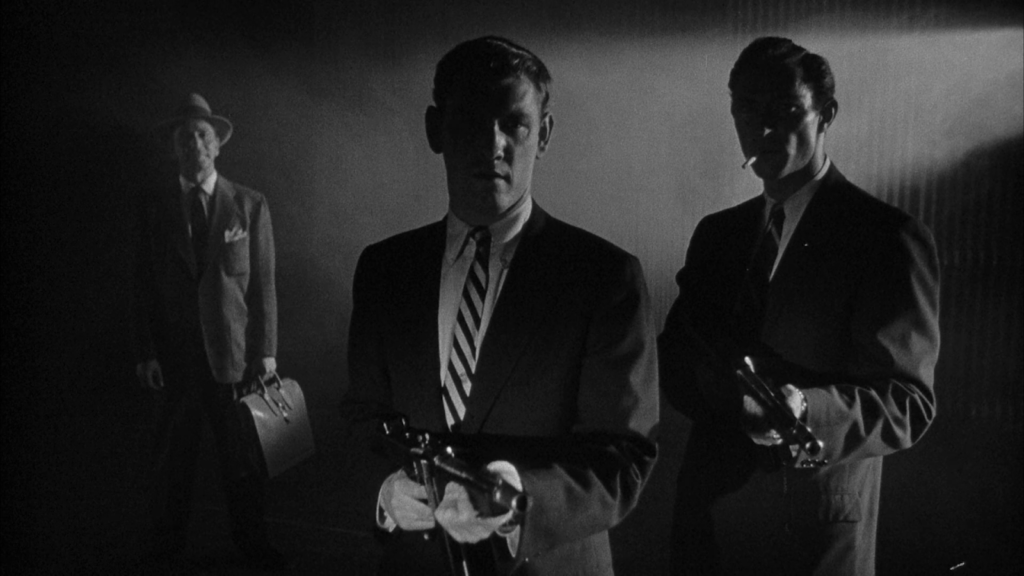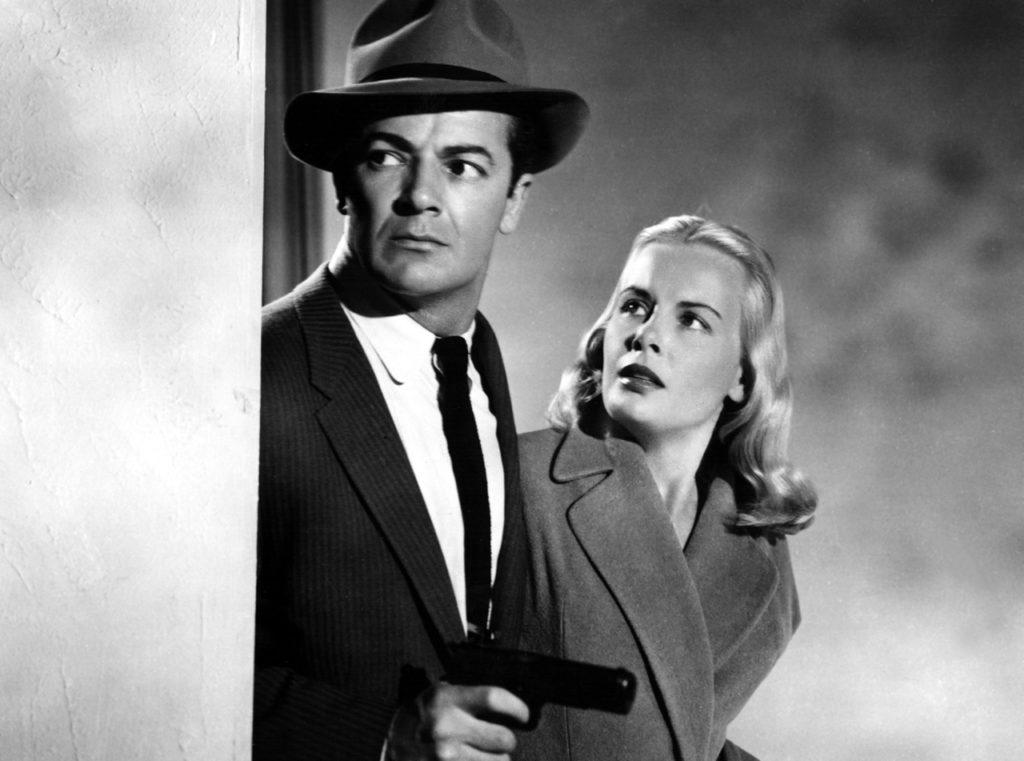“The Big Combo” is a lesson in film noir style, and it kicks off our 5th annual Mob Movie March in a truly unique way. Created in 1955, “The Big Combo” was written by the controversial Philip Yordan, and directed by Joseph H. Lewis, and serves as a perfect example of the 1950s era crime caper story, complete with enviable fedoras and genuine old school dames.
The style of Film noir is a sub-genre unto its own. The characters and environment are generally mysterious, and the lighting and shadow play are done to create an exquisite visual appeal. It’s stylish in design, more of an art house type feel but with better substance. We get all of this with “The Big Combo” from the opening scene of a damsel being chased through darkened alleys, to the perfect grey smoke billowing from a cigarette.
The opening credits set the mood as we get an amazing big band type sound done by the “Grandfather of Film Music” David Raskin. We see darkened shots of a brooding city and we know exactly what we are in for in terms of cinematography. To say “The Big Combo” is stylistic is a gross understatement. Every shot, every angle, and every direction has a purposes, and serves to set the stage for the progression and enhancement of the plot.

We have a beautiful woman named Susan (Jean Wallace) under the thumb of an ominous gangster called Mr. Brown. Opposite this is a rules breaking gumshoe whose only purpose is to bring Mr. Brown to justice. The three main characters perform shockingly well, despite the limitations and oft buffoonishness of the era. Cornel Wilde is the quintessential cop, and as Lieutenant Leonard Diamond does what’s needed to showcase the character. He’s obsessed with stopping Mr. Brown, and goes so far as to use his own money to help with investigative purposes. He’s also in love with Susan, which adds a bit of a twist to the mix.
Hands down my favorite character is the sinister Mr. Brown. Richard Conte does a fantastic job as the smooth and smarmy villain. We know he runs a large crime outfit and that he’s capable of murder. Specific details are intentionally left out as they serve no real purpose – he’s the bad guy, and Conte, who co-starred in the original “Ocean’s 11,” never once lets you forget that. “The man has reason to hate me.” He explains to an associate in obvious earshot of Lieutenant Diamond. “His salary is $96.50 a week. The busboys in my hotels make more than that.” At one point he removes the hearing aid of a man he’s about to have murdered, so he won’t hear the bullets.
Not to be glossed over, the noir style itself is a main character in the movie. To sing its praises too much may sound ridiculous, but there’s such a cool vibe throughout the film that you can’t deny its presence. Simple scenes of Lieutenant Diamond fighting with his boss in a darkened office, or more brutal ones like Mr. Brown and his associates (one of which is played by Earl Holliman who starred in the very first episode of ‘The Twilight Zone’) gunning down a turncoat are filmed so amazingly well, it adds tremendous value to the mix. Cinematographer John Alton, who won an Academy Award in 1951 for “An American in Paris,” was a true pioneer to the genre.
“The Big Combo” may have slipped under your radar, but it’s a fun and stylish film that, while hailing from a different era, still packs the punch needed to be entertaining today.

